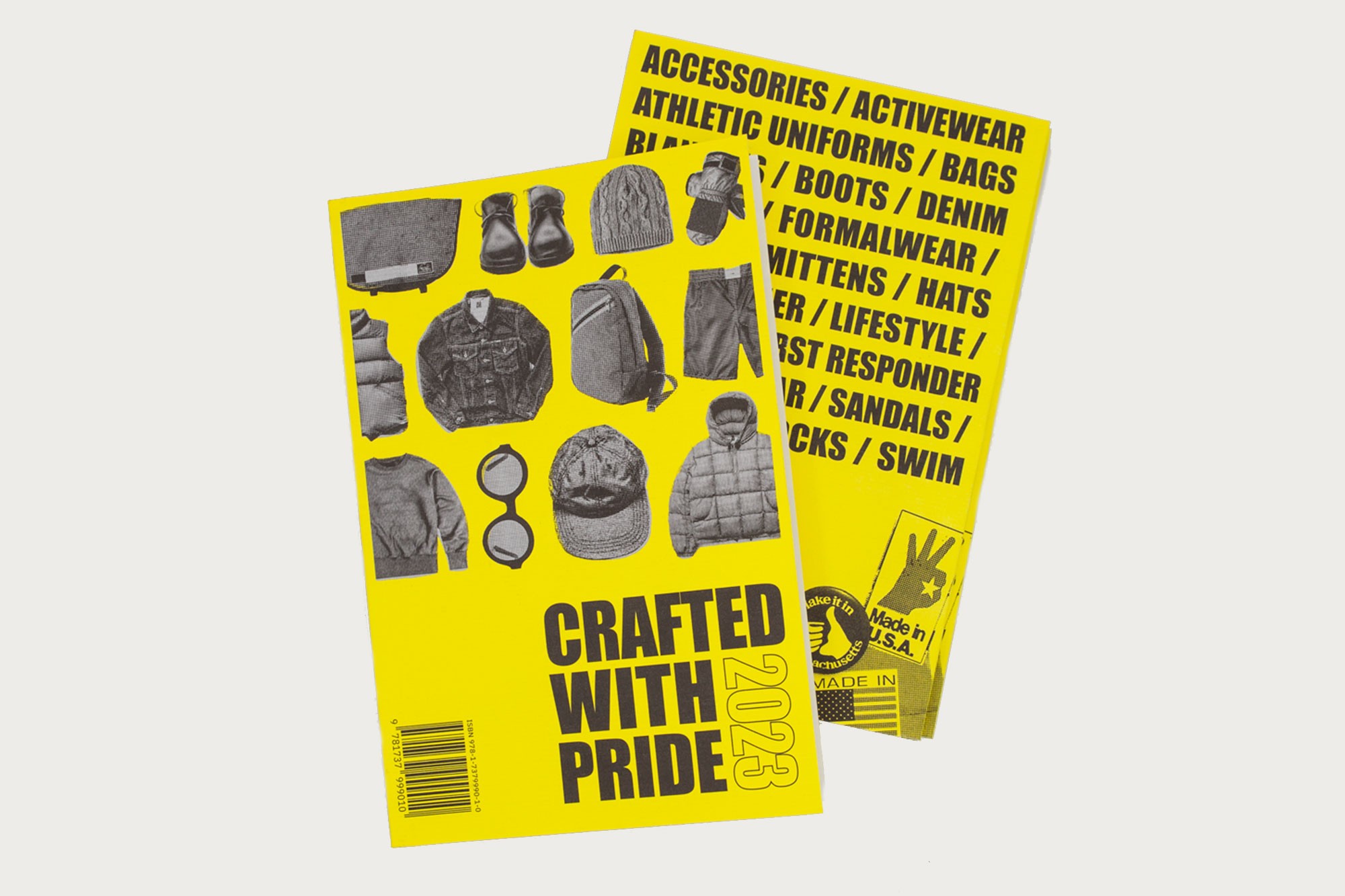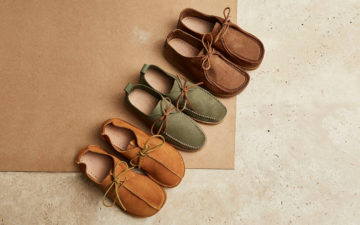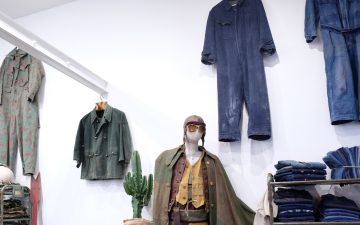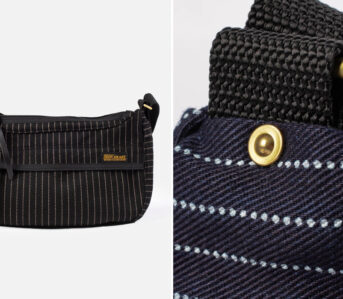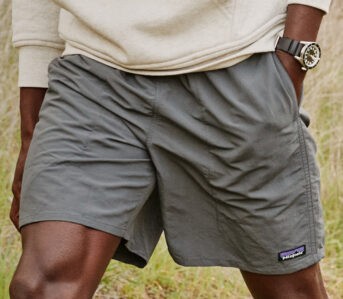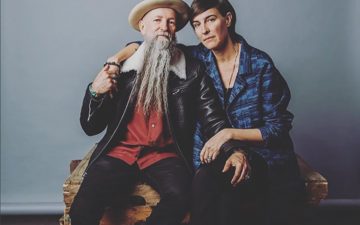Many have tried to create a comprehensive list of all the clothing manufacturers still operating in the United States, I can’t think of any that have gotten as far as Alex Goulet and Willy DeConto, the authors of the new book Crafted With Pride 2023.
Think of it like the Yellow Pages for everything Made in USA, with over 750 different makers. It’s neat and navigable too, categorized by what each company makes (sandals, sports uniforms, hats, etc.) and including a little blurb on what they do, where they do it, how long they’ve been at it, and how to get in contact with them.
Want to buy a pair of gloves made in Missouri, check out Midwest Glove Company. How about organic hemp diapers? That would be Babee Greens of North Carolina. Crafted With Pride covers it all, from the most basic of hi-vis workwear to American made tuxedos. I had the chance to chat with Willy and Alex about their journey on the book and the trials and tribulations of making it in America in 2023.
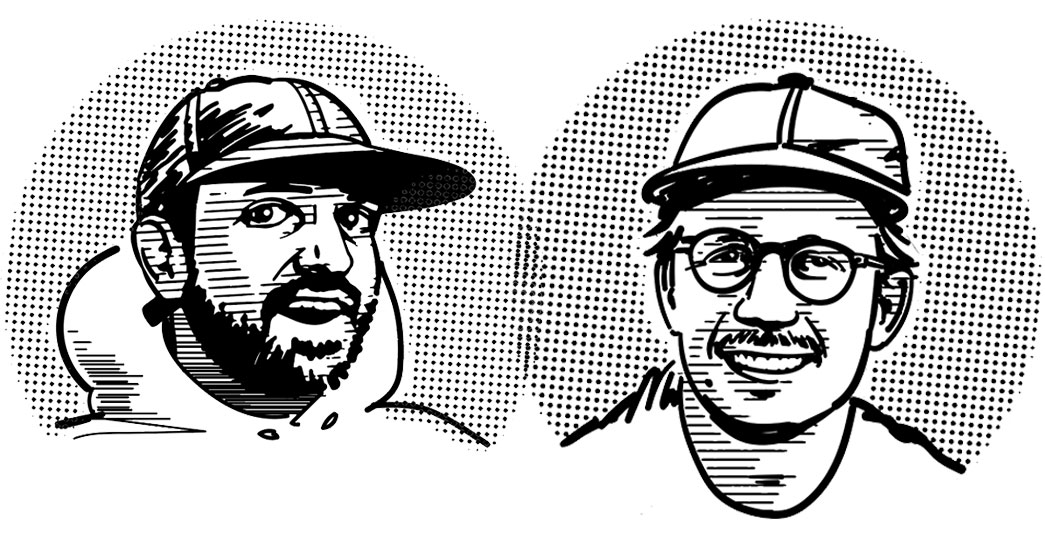
Willy DeConto (left) and Alex Goulet (right).
If you could describe the book as succinctly as you can.
Crafted With Pride 2023 is a compilation of thoughtfully produced, quality apparel made right in your neighborhood. It features over 750 companies from across the United States committed to domestic manufacturing. It’s divided in two sections; ‘featured’ which highlights 50 outstanding brands in full color, and the ‘directory’ which is a yellow pages style list of companies organized across 25 categories of apparel, accessories, and footwear such as denim, boots, sneakers, outdoors, formalwear, etc. The book aims to let readers discover local producers of top quality goods that might otherwise slide under the radar.
What’s the criteria you had for who could make the list?
To be included in the book, companies had to be engaged in production of wearable items such as apparel, footwear, and accessories within the United States. Companies that did not produce 100% of their products domestically or manufacture their own products were included on a case-by-case basis when they demonstrated a clear dedication to U.S. manufacturing. For example, New Balance produces less than 50% of their products in the USA however, they are the biggest domestic athletic footwear manufacturer and have operated factories in New England for decades making them an obvious company to include.
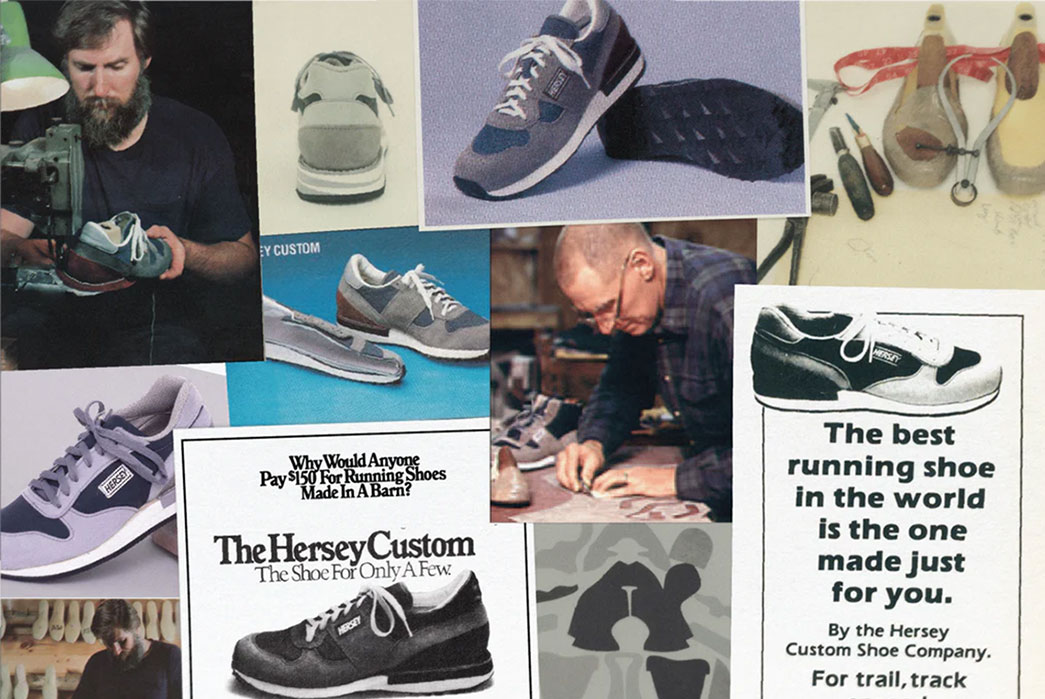
How did you get into this? Is there an origin story with a previous book?
Both of us have a background in vintage clothing which is how we originally met a few years ago when Alex was researching and sourcing items for his books on vintage Champion sportswear. We found a shared obsession with contemporary local manufacturers who had deep roots— sort of like if certain defunct vintage brands had never become defunct, had never moved their factories far away, or had never changed their process and quality.
Being in the Northeast and growing up in Massachusetts we got to be surrounded by a rich history of manufacturing and luckily a few stalwarts that are still chugging along (Alden, Steele Canvas, Kellsport, Victory Sportswear to name a few) so we bonded over that and wondered how we might do something archival with these spots for posterity? And second, how can we spread the word so people get turned onto garments that are maybe a little off the beaten path, more interesting and deep through their local origins, history, and regional pride. That’s more or less how we got into this thing.
The layout is really well done and easy to navigate. Is there another historical directory or reference guide you were inspired by?
Thanks! Regarding the layout— the yellow directory section draws generally from vintage trade publications like Davison’s Textile Blue Book, indexed publications like Yellow Pages, and vintage clothing and outdoor catalogs. We took lots of cues on organization, layout, and illustration from these. For the featured section, we definitely took inspiration from the way the Japanese passionately chronicle American fashion in printed magazines (Lightning, Clutch, Popeye, etc). Even these from the 1970s/80s.
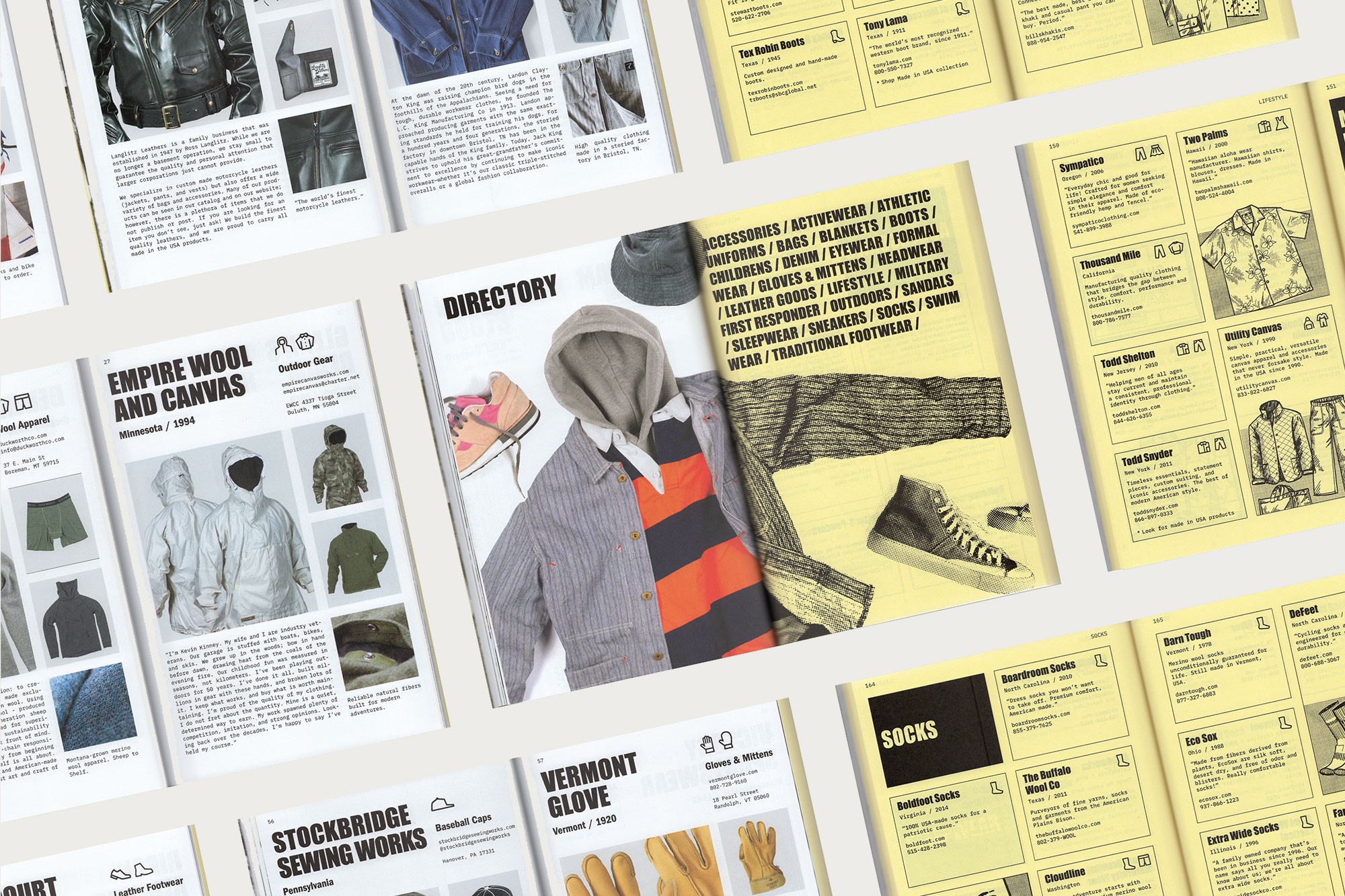
How did you go about finding all these manufactures? Was there another source in existence you could reference? And how did you confirm once you’d found them? I’m imagining loads and loads of spreadsheets and countless phone calls.
We exhausted nearly every research method imaginable for compiling the list from word-of-mouth recommendations to vintage publications to internet sleuthing. For starters, we both have a background in vintage clothing so you could say the first list of companies came from that— hearing stories, looking at tags, things that pop up on eBay. There are a handful of classic brands well known in the vintage community like Pointer/LC King, Danner, Round House, Columbia Knit, Camber, etc.
Beyond that we referenced a handful of other pre existing sources like out-of-print industry trade catalogs– Davidson’s Textile Blue Book being one example. We also looked at some Japanese publications which, along with their retail market, had kept many of these US made businesses going when Americans lost interest.
The internet and social media were of course helpful, especially to find evidence that companies were still operating. And finally, references from manufacturers— you start talking to one manufacturer about the book and they throw a few other companies onto the radar. A “you guys should talk to my friend” type of thing. As you might expect the word-of-mouth, offline brands are often the most interesting. And, yes, lots of spreadsheeting, emails, phone calls.
Did you find anyone unusual or particularly amusing in your search? Who or what most surprised you in the course of making the book?
Oh yeah. Well first, a lot of these brands are sporting some delightful web 1.0 websites. It almost started to become a proxy for our favorites. You’d get a lead on a new name, go to the site, and you see a couple GIFs and that comic sans font start loading up… your heart starts pumping!
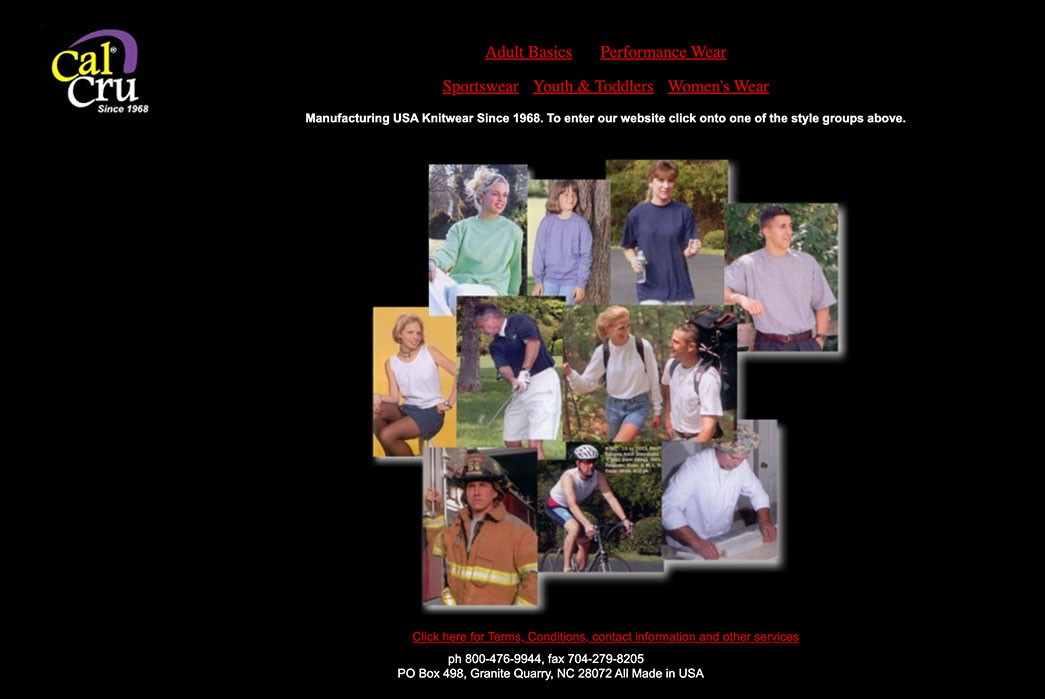
One such web 1.0 site for North Carolina sportswear maker, Cal Cru.
We were also blown away by how unusual and niche some of the products were from Old West style garments to eyewear for people with big heads to handknit headwear produced by Native Alaskan co-ops. In many cases, this is how these companies have survived in the age of multi-nationals dominating the apparel game. If you provide gear for ultra-niche groups such as arborists, mariners, cold storage workers or welders there’s often a micro culture with a set of very specific needs that only a small, independent, manufacturer will be able to satisfy. That intimate knowledge of the customer, personal relationship, and made-for-purpose design is what makes for a great product in our opinion.
The biggest surprise has been that these companies just keep coming out of the woodwork. When we started getting into production of the book our list was maybe 250 brands, after “one more round” of due diligence we ended up with 750 brands. We had to just cut ourselves off at a point. Another 250+ have been added to the list since we published a couple months ago.
Are there any brands that opened or closed while you were in the process?
Definitely a handful a brands opened and closed during the process. Notably one of the companies we were really keen on, and one that inspired this project from its beginning was New England Cap Co. in Connecticut.
While its such a huge bummer when someone closes, especially when there’s a lot of history and knowledge lost, the blow is softened by some great new brands coming into the fold at the same time. Actually, when New England Cap closed and had a liquidation sale, the guys from nearby Hartford Denim Company were able to acquire some dead-stock fabric which they then used for a run of workshirts, and Unionwear of New Jersey took on some of the machinery. It’s a great example of the energy being transferred and the torch being passed in a way.
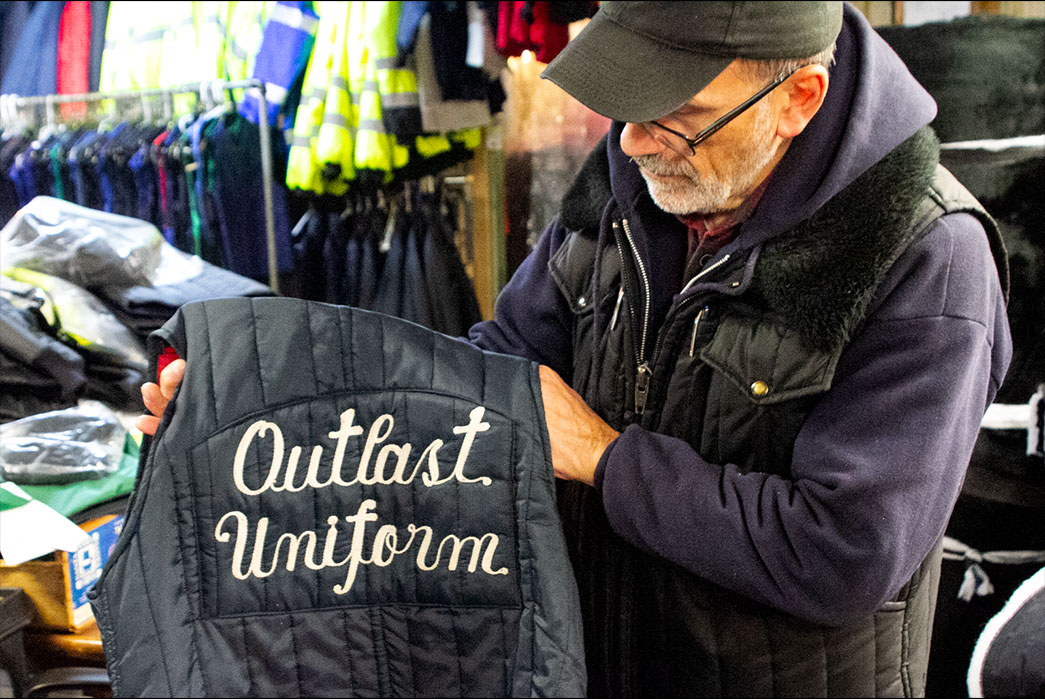
It looks like you did a few factory visits from the photos in the book? Who did you see in person and what were those visits like?
We did! Factory visits and digging through company archives was actually where we began with this project before we focused more heavily on the “yellow pages” idea. We started with companies that were in driving distance of us. The Northeast has a healthy roster of heritage manufacturers so we bugged a handful of companies in the area to ask if we could come see what they were up to and luckily a few of them kindly opened up the doors for us. We visited three Massachusetts companies; Outlast Uniform who make custom cold-weather outerwear, Steele Canvas who’ve been making canvas baskets and bags for over 100 years and Victory Sportswear who make classic running style sneakers.
Going to the factories is what its all about! The more you understand the process, the material choices, the skilled craftsmanship, and the company history, the faster you become a believer. Buying “factory direct” is a huge pillar of this book… drawing a clear line between where and how something is made and the point of purchase. For us millennials and younger generations this is a pretty novel experience, our idea of where clothing comes from is just ‘the store’ or ‘the mall’ or ‘online’. The whole notion of the garments actually being manufactured has been totally removed from the equation in favor of slick image marketing, it’s pretty wild.
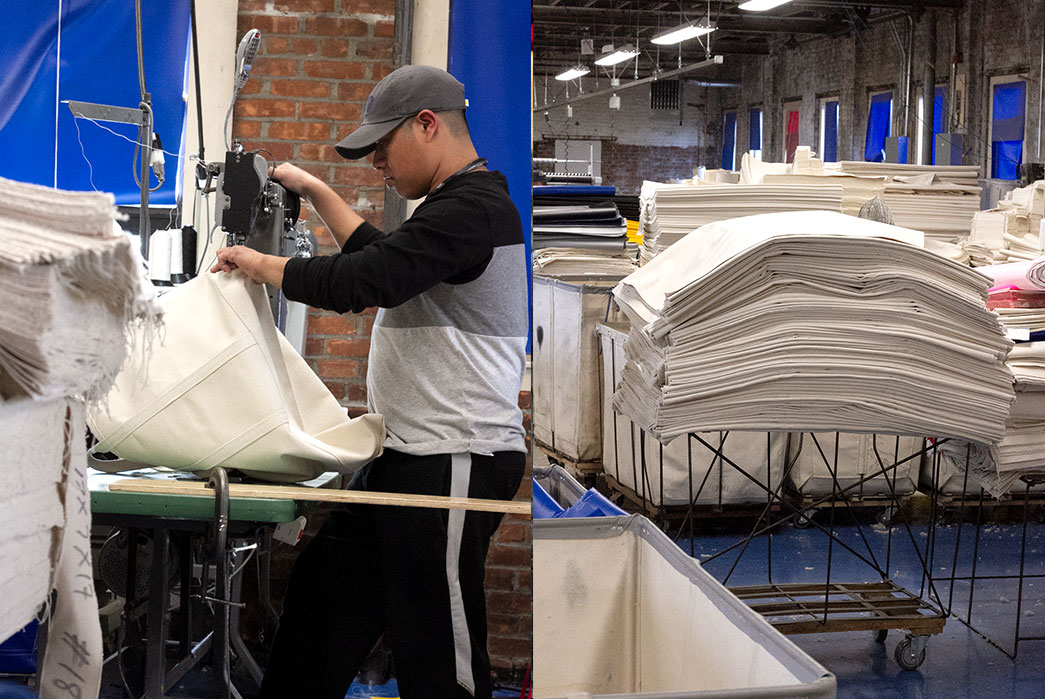
Some further color on visiting Outlast, Steele, and Victory:
Outlast’s primary business since day one has been making functional cold storage apparel for use in the produce and meat markets. Therefore, a proper tour of Outlast really extends beyond the walls of their building and begins around 5 or 6am at the nearby Chelsea produce market with Nikos—the third owner since 1928—walking the docks, hamming it up, and writing down custom jacket and vest orders before heading back to the shop where he’ll cut patterns to be sewn by his ace stitcher.
Everything down to the pockets, zippers, and snaps is custom specified by the client, so the process at their shop is very meticulous and focused. The culture at the market is incredibly energetic and has so much personality, and Outlast is really a part of it. One of the big produce distributors hangs up the vests of retired employees in the rafters like it’s the NBA.
Steele is the largest operation of the three and has a busy feel in the factory with lots of modern updates. They still keep records on index cards, old catalogs, photos, and advertisements going back to the 1920’s. It’s a family owned company with lots of long-time employees so that adds to the spirit in a big way.
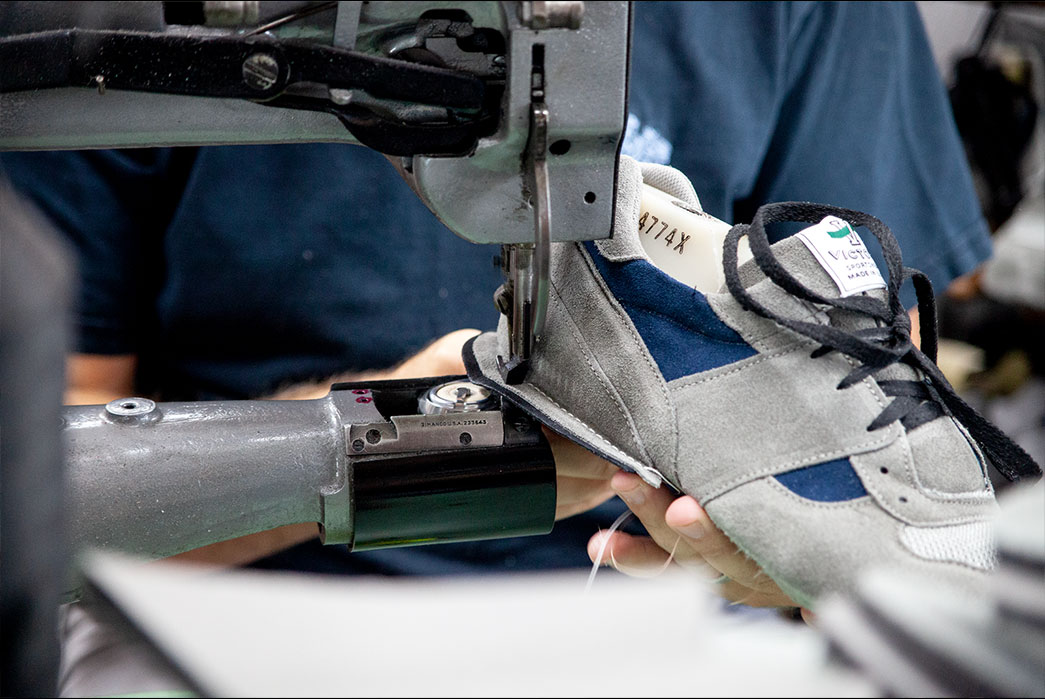
Victory Sportswear is an entire end-to-end sneaker factory in whats probably like an 800 sq/ft room. Which is astonishing. And it’s all operated by one guy, Steve. His dad uses the other half of the building to continue running the family shoe repair business which Steve’s grandfather started in 1921. Steve bought the company back in 2000 from Bart Hersey, a shoe dog with a long history making footwear at Bass and New Balance in Maine before founding his own business called Hersey Custom Shoe. The factory is loaded with all this great hand-me-down equipment from the golden age of shoe manufacturing.
I see the year 2023 is in the title, is this something you’re planning on updating every year like the yellow pages as manufacturers come and go?
Having a dated, continually updated publication would be our dream. However, this inaugural issue is us testing the waters— is this concept something people care about? Is it something people will buy? Hopefully in a few more months as we see how the 2023 edition is received we’ll get a better sense of future issues and their release frequency be it annually, bi-annually, every few years. As mentioned, our list has already grown with another 250 brands coming out of the woodwork since we published just a couple months ago.
Thank you for your time, we look forward to many updates to come.
You can purchase a copy of Crafted With Pride 2023 for $30 on the Heddels Shop.

